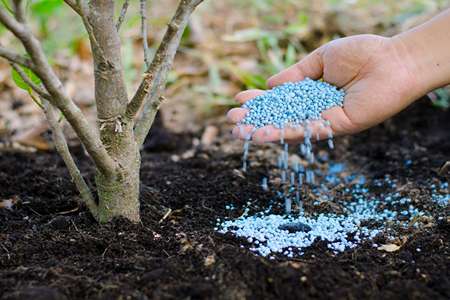The agricultural industry has experienced significant advancements in recent years, with scientists and researchers constantly striving to improve crop yields and address sustainability issues.
One such innovation is the introduction of nano fertilizers, which promise to revolutionize agricultural practices by enhancing nutrient absorption and minimizing environmental impact.
However, despite their potential benefits, nano fertilizers are not without their drawbacks.

In this article, we will delve into the disadvantages of nano fertilizers and explore why their use in agriculture requires careful consideration.
Environmental Impact
One of the primary concerns associated with nano fertilizers is their potential impact on the environment.
Nano-sized particles have the ability to penetrate through the soil and reach groundwater, leading to potential contamination and ecosystem disruption.
This raises concerns about the long-term effects on both terrestrial and aquatic life, including plants, animals, and microorganisms.
Additionally, the non-biodegradable nature of these particles raises questions about their ultimate fate and accumulation in the environment.
Health Risks
Nano fertilizers, due to their small size, can easily be inhaled or absorbed through the skin, posing potential health risks to farmers and other individuals handling them.
Studies have shown that nanoparticles can have adverse effects on lung function, leading to respiratory issues such as asthma and inflammation.

Furthermore, the potential for these particles to enter the food chain raises concerns about the safety of consuming crops treated with nano fertilizers, as their long-term effects on human health are yet to be fully understood.
Soil Quality and Nutrient Balance
While nano fertilizers may promise improved nutrient absorption, their excessive use can disrupt the delicate balance of soil nutrients.
The nano-sized particles can lead to nutrient imbalances, resulting in negative effects on soil health and fertility.
Over time, this could lead to increased soil degradation and reduced agricultural productivity.
Additionally, nano fertilizers may inhibit the natural biological processes in soil, such as nutrient cycling and microbial activity, further impacting long-term soil health.
Economic Implications
Nano fertilizers often come with a higher price tag compared to traditional fertilizers.

The manufacturing processes involved in creating these nanoscale particles require advanced technology, leading to increased production costs.
Farmers, particularly those in developing countries or with limited financial resources, may find it challenging to afford nano fertilizers on a large scale.
This economic barrier hinders the widespread adoption of these fertilizers, limiting their potential benefits to a select few.
Regulatory Challenges
The nascent nature of nano fertilizers poses challenges to regulators in establishing appropriate safety protocols.
With limited research on the long-term impacts of these particles, determining safe exposure limits and appropriate handling procedures becomes a complex task.
Inadequate regulation could potentially lead to harmful consequences, both for the environment and human health.
Therefore, a robust regulatory framework is essential to ensure the responsible and safe use of nano fertilizers.
Potential Negative Impact on Beneficial Organisms
Nano fertilizers, while designed to enhance nutrient uptake by plants, can also inadvertently harm beneficial organisms, such as earthworms and beneficial insects that play crucial roles in maintaining soil health.
The indiscriminate use of these fertilizers may disrupt the delicate balance of soil ecosystems, negatively impacting the natural predators and decomposers that keep pest populations in check.
This disruption could lead to uncontrolled pest outbreaks and a decline in overall soil biodiversity.
Resistance Development
Continuous and excessive use of nano fertilizers may lead to the development of resistance in plants and pests.

Over time, plants can become less responsive to the nano fertilizers, requiring higher doses or alternative treatments to achieve the desired effects.
Additionally, pests and pathogens may evolve mechanisms to overcome the enhanced nutrient uptake, leading to reduced effectiveness of nano fertilizers in pest control.
This resistance development can ultimately lead to an overreliance on these fertilizers, hindering sustainable agricultural practices.
